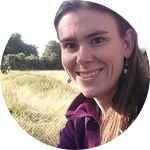About This Project
Invading forest pathogens are responsible for devastating environmental, ecological and economic consequences. For example, sudden oak death in California has killed millions of oak and tanoak since its detection in 1995. However, limited resources for both searching for invading pathogens and controlling their spread must be carefully managed. We will build an online software tool based on a mathematical model, for predicting the effects of proposed detection and control policies.
Ask the Scientists
Join The DiscussionWhat is the context of this research?
A commonly-used disease control strategy is removing hosts within a pre-specified distance, R, of known infected hosts. The optimal value of R can be found by scanning over its possible values in forward simulations of models. Software has previously been built for the non-specialist that allows a policymaker to predict the effects of their choice of control strategy on the future spread of an invading pathogen (see e.g. www.webidemics.com). However, detecting infected hosts is important before removal can occur, and carefully planned searching strategies aid efficient detection. Combining detection and control into a single application will therefore yield more efficient control, even though this has been neglected until now. This project will address this.
What is the significance of this project?
Invading pathogens have catastrophic effects on our forests. The significant contribution of this project will be software for planning both detection and control strategies in one single package. Our tool will be hosted online for real-time deployment, and will be tunable to specific invading pathogens such as sudden oak death by allowing disease-specific transmission parameters to be inputted. The tool will also optimize detection and control strategies to find the approach best conditioned to the epidemiology of the invading pathogen. This is a significant improvement on existing tools that consider control based on simple random detection of infected hosts.
What are the goals of the project?
The first key output from this project is to develop a general mathematical model to characterize the spread, detection and control of forest pathogens, which can be parameterized for specific pests or pathogens. The second output is a user-friendly software tool, so that policymakers can straightforwardly use our model to explore possible detection and intervention strategies for specific invading pests and diseases. This interface will be hosted online so that it is easily accessible. The third output is a scientific publication that will introduce the software tool and use its output to find optimal detection and control policies for a number of important plant pathogens including sudden oak death. A user manual for our tool will be in the supplementary material with the paper.
Budget
This funding will pay the undergraduate researcher - Jake Stockwin - to work for two months on this project with Dr Robin Thompson. Not only will this give Jake the opportunity to experience research in this important field, but having his assistance for building the software and exploring possible searching and control strategies is vital for this project to be successful.
Endorsed by
Meet the Team
Robin Thompson
I am a researcher in Mathematical Biology and tutor in Mathematics at the University of Oxford, UK. I’m associated with the Department of Zoology (research) and Lady Margaret Hall (teaching).
Please see my recent paper in Ecological Modelling about modelling the forest pathogen causing sudden oak death (http://www.sciencedirect.com/science/article/pii/S0304380015005827), and also my personal website (www.robin-thompson.co.uk)
I am really excited about this project, thanks for your support!
Jake Stockwin
I am a fourth year MMath student in Mathematics and Statistics. I am particularly interested in doing mathematics with positive, real-world impacts. For example, my fourth year dissertation concerns Bayesian Optimisation and Gaussian Processes, with application to medicine. I am also applying for a PhD on a similar topic.
I am a self-taught web developer and have written websites for various charities and organisations. This summer research project will enable me to combine web development with my mathematical skills. I am looking forward to the chance to undertake this project!
Lab Notes
Nothing posted yet.
Additional Information
The stochastic simulation model used for this project to represent the spread of plant pathogens will be based on [1], below.
References relevant to this project:
[1] Thompson RN, Cobb RC, Gilligan CA and Cunniffe NJ. Management of invading pathogens should be informed by epidemiology rather than administrative boundaries (2016) Ecol. Model., 324:28-32
[2] Cunniffe NJ, Stutt ROJH, DeSimone RE, Gottwald TR and Gilligan CA. Optimising and communicating options for the control of invasive plant disease when there is epidemiological uncertainty (2015) PLoS Comp. Biol., 11:e1004211.
[3] Parnell S, Gottwald TR, Gilligan CA, Cunniffe NJ and van den Bosch F. The effect of landscape pattern on the optimal eradication zone of an invading epidemic (2010) Phytopathol., 100:638-644.
Project Backers
- 7Backers
- 10%Funded
- $204Total Donations
- $29.14Average Donation





